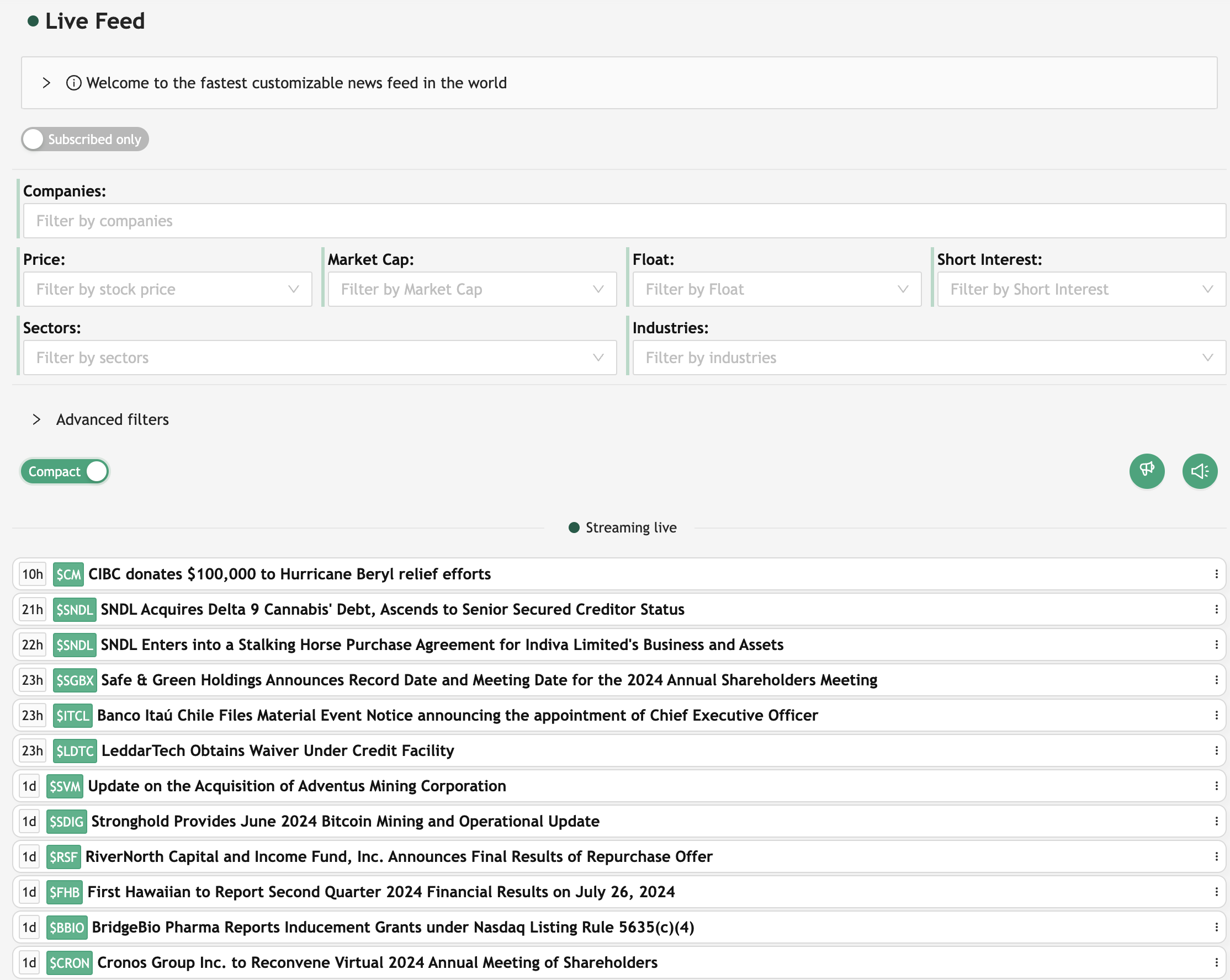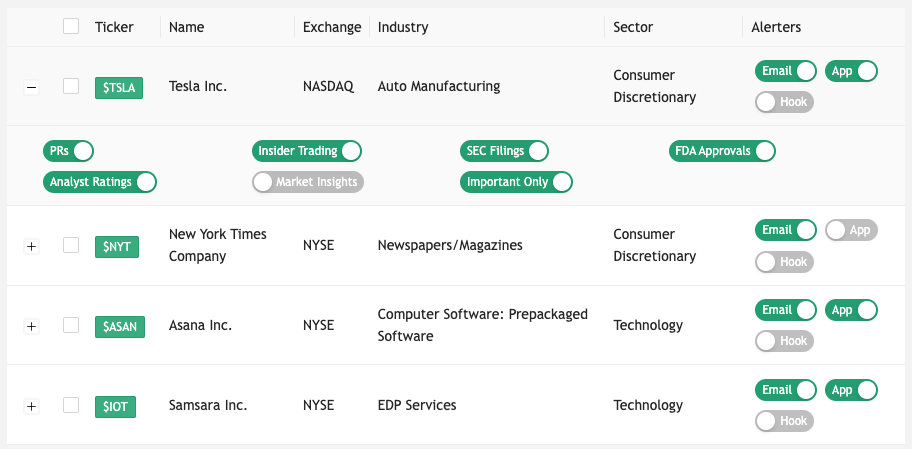Weekly insight reads limit reached.
Join Quantisnow to enjoy unlimited reads, alerts, live feeds, and more.
Meet Quantisnow
Stock alerts. Live news feeds. Press releases. Insider trading. FDA approvals & more.
Invest smarter
A better trading workflow
Access market-moving news before they break out to the general public. Let Quantisnow cut out the noise and only receive insights that matter.
- Live feeds
- Real-time news feeds for Press Releases, SEC Filings, FDA approvals, market insights and more.
- Custom filters
- Filter out the noise with company filters, market cap filters, price filters and more.
- Audio Squawk
- Multitask with confidence and let Quantsinow read breaking news out loud.


Save time
Unlock Insights with AI
Get quick summaries and precise Q&A for every insight, empowering you to make informed decisions without sifting through entire press releases and lengthy SEC filings.
Get alerted immediately
All your stock market alerts in one place
Quantisnow alerts are fast, customizable, and versatile.
- Email alerts
- Subscribe to your favorite stocks and receive email alerts each time a news pops up.
- App notifications
- Reduce alerting latency with in-app notifications. Same as email alerts, but faster.
- Webhooks
- Integrate with Quantisnow programmatically and receive live insights via webhooks
- Granular alerts
- Want to receive Press Releases but no SEC filings? No problem - Quantisnow alerts are highly customizable and can seemlessly tailor to your trading needs.

Simple no-tricks pricing
One membership with full access and no delays.
Quantisnow Plus
Your personal trading assistant for just $39/month.
What's included
- Live feeds
- Audio squawk
- Compact mode in feeds
- Email alerts
- App push alerts
- Unlimited insights reads
- Unlimited subscriptions
- Advanced filters in live feeds
- Support
- No ads
- AI-generated summaries and Q&A
One membership - all access
$39/month
Get access$39/month with yearly billing, $49/month with monthly billing
